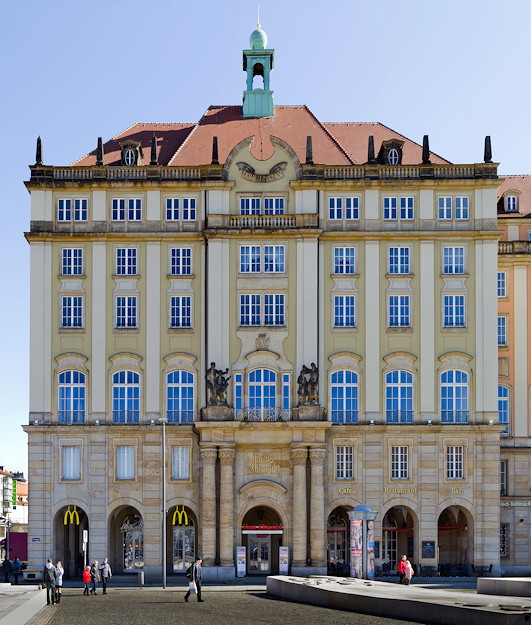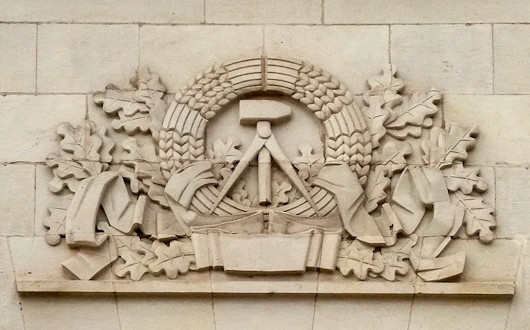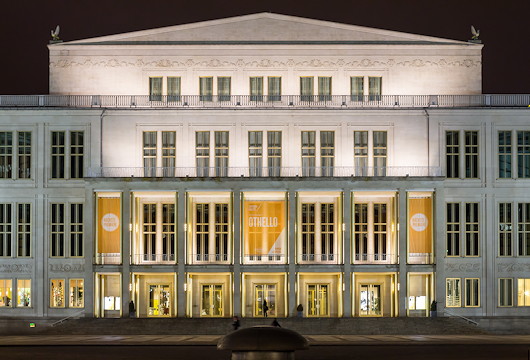2016 February
About Andrew Cusack
 Writer, web designer, etc.; born in New York; educated in Argentina, Scotland, and South Africa; now based in London.
Writer, web designer, etc.; born in New York; educated in Argentina, Scotland, and South Africa; now based in London. read more
News
Blogs
Reviews & Periodicals
Arts & Design
World
France
Mitteleuropa
Knickerbockers
Argentina
The Levant
Africa
Cape of Good Hope
Netherlands
Scandinavia
Québec
India
Muscovy
Germany
Academica
A Gothic Library for Christchurch
Christchurch, the oldest city in New Zealand, was known for its gothic cathedral before the February 2011 earthquake destroyed its spire. Modern architects, as voracious a species as ever existed, descended upon the city like a plague, declaring that everything traditional must be demolished and hideous glass hulks raised instead. They succeeded in convincing the city’s Anglican authorities to deconsecrate the cathedral (despite remaining mostly intact) and plans for its future remain vague.
Local architectural designer & engineer James Carr has come up with a proposal to build a central library for Christchurch on Cathedral Square. The design complements the gothic cathedral (or whats left of it) and would be a handsome addition to the city.
More whimsical perhaps is Mr Carr’s idea to build a gothic rugby stadium in Christchurch.
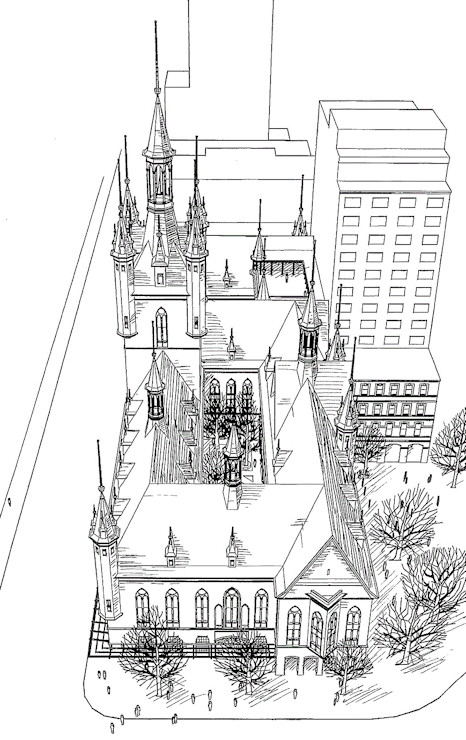
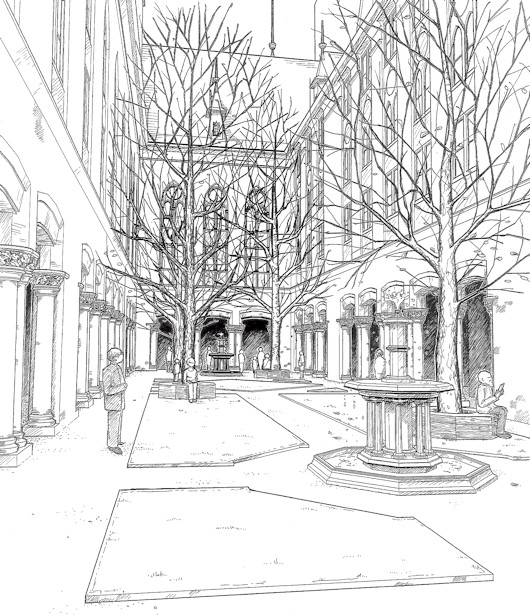
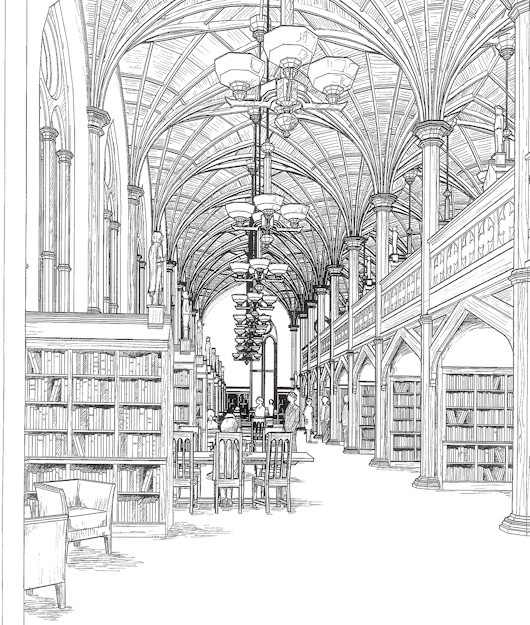
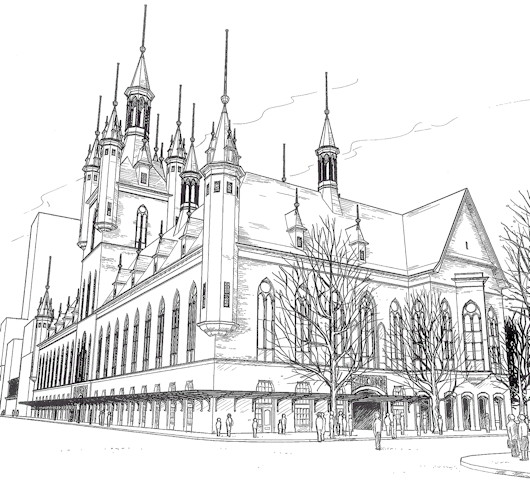
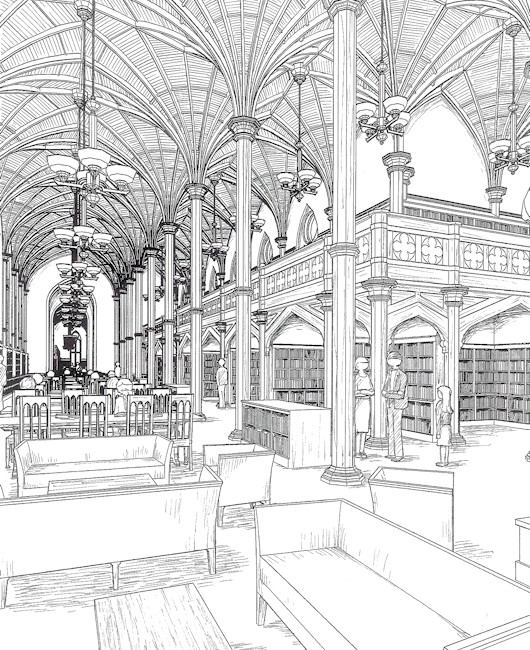
Suid-Afrika
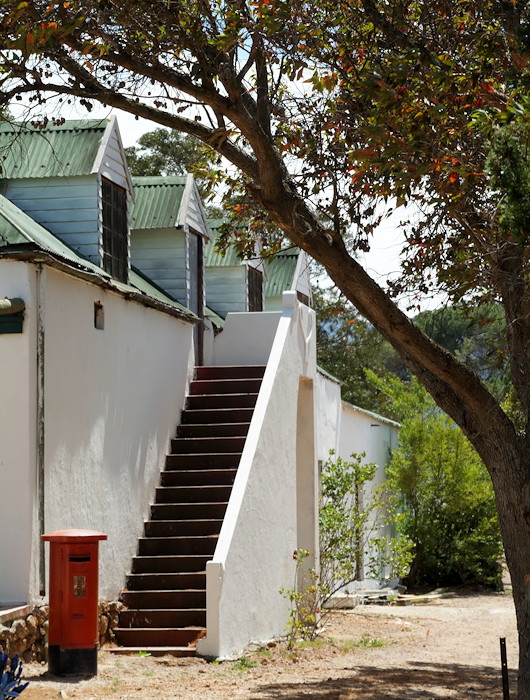
Suid-Afrika — ’n kleine bietjie van Hemel.
Nick and Miriam

The Lib Dems are justifiably an unpopular lot, but their obvious defects aside one can find time to love a bare few of their number.
Sir Ming — sorry, Lord Campbell of Pittenweem now — will always be my favourite Liberal leader: captain of the Scotland team at the 1966 British Empire & Commonwealth Games, Chancellor of the University of St Andrews, as well as my MP when I lived in the Kingdom of Fife.
The prize for favourite unsuccessful Liberal candidate goes to my former tutor, the arch-monarchist Rt Rev Dr Ian C Bradley, who contested Sevenoaks for the Liberals at the February 1974 general elections. (Incidentally, the seat was later contested by Tim Stanley for the Labourites in 2005.)
But I also have to confess I’ve always rather liked Nick Clegg. While the overwhelming majority of politicians are mediocre, he enjoys the élan of a continental mediocrity rather than a more English strain. In fact, Nick Clegg’s incredibly boring and voter-friendly English name disguises a polychromatic background. On his father’s side he is descended from the Engelhardts (a Russian noble family of Baltic-German ancestry) and is indeed a distant cousin of Count Michael Ignatieff, leader 2009-2011 of Canada’s Liberal Party, while his mother is a Hollander of the Dutch East Indies. No surprise then that Clegg claims fluency in French, Dutch, German, and Spanish. What a waste he was as DPM: he would’ve made a decent Foreign Secretary.
I suppose as an inveterate cosmopolitan myself I must subconsciously find some strange affinity with this ex-leader of the Lib Dems. But chatting with my friend Roland the other day we decided that really the best thing about Clegg is not the man himself but his spectacular wife.
Being stylish, beautiful, Spanish, and Catholic, Miriam González Durántez manages to combine many wonderful and desirable qualities. She is also very obviously in charge. “Oh, Nicky darling, you are agnostic? How cute. The children are being raised Catholic.” And she looks great in Liberal yellow — not a colour every woman can pull off.
If the Lib Dems are looking to increase their vote-share and return to former prominence they could do worse than making Miriam leader. But then — with the exception of Leeds North West with its Chestertonian pro-life real-ale-and-trams-obsessed Lib Dem MP — this is a party unlikely to ever capture the Cusackian vote.
Germania
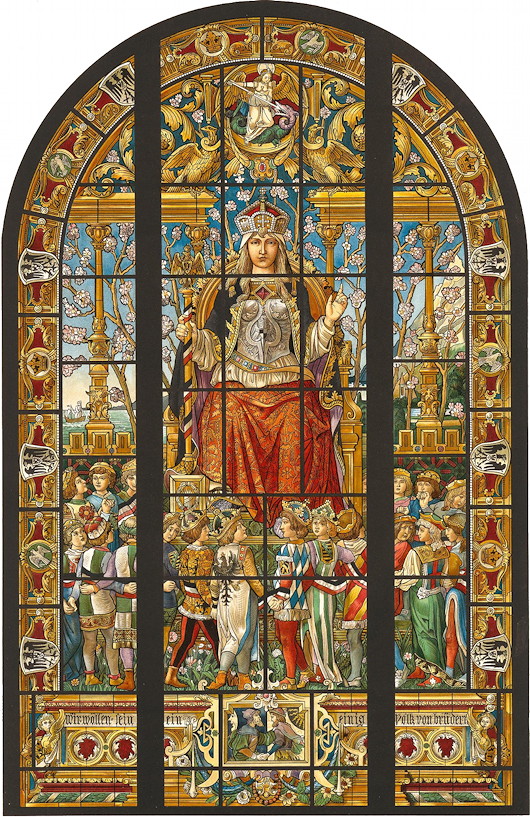
I’ve been reading Golo Mann’s History of Germany Since 1789 — cracking stuff.
This depiction of Germania, the personification of the German nation, was for a stained-glass window in the Reichstag building, built between 1884 and 1894 in Berlin and since 1999 home once again to the German parliament.
Desk

My old desk when I was working at The New Criterion in New York.
The bottle of Pimm’s — a gift from “Mr & Mrs Peperium” — was, alas, knocked over and broken by the cleaner.
St Mary Redcliffe
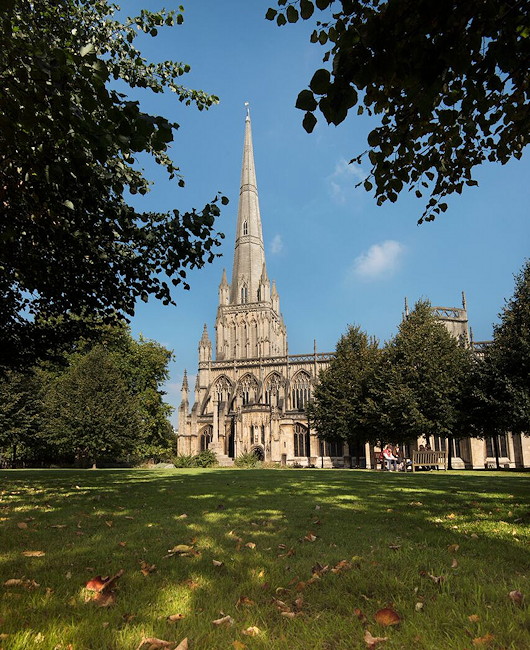
The Church of St Mary Redcliffe in Bristol was famously described by Elizabeth Tudor as ‘the fairest, goodliest, and most famous parish church in England’.
A thoughtful leader
As newspapers go, the Feudal Times and Reactionary Herald is devilishly difficult to obtain. Its coverage of internal squabbles within the Marxist-Lefebvrist faction of the Communist Party of Great Britain makes for compelling reading and it is likewise to be thanked for its sensitive reporting on the goings-on of various disenfranchised Indian princely families. Alas, I have never discovered whether it is possible to subscribe to this illustrious periodical, and a visit to the City of London address printed on its editorial page revealed only that the building had been bombed out during the Blitz and more recently redeveloped into a giant postmodern office block housing ‘management consultants’.
As is often the case in times of difficulty, it is not in the metropole but in the periphery one finds comfort. I am currently enjoying a few days in Wexford town (or Veisafjǫrðr as the Feudal Times & Reactionary Herald would doubtless call this old Viking settlement in Ireland). This very day I was enjoying a delicious pub lunch — stuffed chicken wrapped in bacon with peas and mash all united by a gravy of optimal viscosity accompanied by a locally brewed Schwarzbier — when I was delighted to discover next to me a copy of the illustrious title left by a previous punter. A few weeks old and already well-thumbed, it nonetheless included this thoughtful editorial regarding the recent Rhodes controversy in Oxford which our readers might, despite its pretentious prose, find interesting:
Ex Africa semper aliquid novii a Roman of old once noted. We have recently and from many quarters heard much criticism of Mr Ntokozo Qwabe — a Rhodes scholar from the late lamented Union of South Africa — concerning his call for the removal of the statue of Mr Cecil Rhodes (quondam Prime Minister of the Cape of Good Hope) from the High Street frontage of Oriel College, an institution much beloved by many of the readers of this newspaper.
As Mr Qwabe is one of those currently enjoying the fruits of Mr Rhodes’s rather typical largesse, he has doubtless left himself open to accusations of hypocrisy and ingratitude. Nonetheless, we believe a certain lassitude and forgiveness is called for in this case as recent utterances pouring forth from his loquacious tongue have proved more amenable hearing to ear-trumpets both feudal and reactionary. For we are informed the young scholar has a new target in his sights: the tricolour flag of the dreaded French Republic. Mr Qwabe has called for it to be banished from the streets and quadrangles of both town and university, deriding this “violent symbol” of a republican regime that has “terrorised innocent lives”. Such a forceful allusion to the regicides of 1793 is to be welcomed firmly.
True to their typical form, the tweeded, begowned, and enscarfed undergraduates of Oxford’s colleges have taken up Mr Qwabe’s plea. Already the blue-white-and-red flag which until recently hung from the Pierre Victoire restaurant in Little Clarendon St has been replaced by a lily banner. It is regrettable, though, that a screening of ‘Le roi danse’ at the School of Modern Languages resulted in intermittent street violence between roving bands of rival Legitimiste and Orleaniste students, egged on by Bonapartist townsfolk from working-class enclaves in Jericho and Cowley. (The biretta of an innocent Oratorian is believed to have been knocked off in the ensuing melee.)
Mr Qwabe may have arrived on these shores with plans for revolt and ‘transformation’ but it is clear that Oxford is having its usual desired effect on this bright young man. Tumult is giving way to torpor, and doubtless this Rhodes scholar will return to the happy land of the assegai and the rondavel a good deal more broad-minded and reactionary. We wish him well.
Frankfurter Hefte

German typography and print design in the 1950s combined elegance and simplicity, as shown here in the front cover of Frankfurter Hefte, the political monthly founded by Eugen Kogon and others in 1946. (more…)
Haus Altmark
While the remarkable rebuilding and rehabilitation of Dresden is of a much more recent vintage, the historicist design of Haus Altmark (Herbert Schneider, 1953-1956) in that city is another good example of the Socialist Classicism of the DDR.
(c.f. Leipzig Opera House)
Joy

Something I constantly notice is that unembarrassed joy has become rarer. Joy today is increasingly saddled with moral and ideological burdens, so to speak. When someone rejoices, he is afraid of offending against solidarity with the many people who suffer. I don’t have any right to rejoice, people think, in a world where there is so much misery, so much injustice.
I can understand that. There is a moral attitude at work here. But this attitude is nonetheless wrong. The loss of joy does not make the world better — and, conversely, refusing joy for the sake of suffering does not help those who suffer. The contrary is true. The world needs people who discover the good, who rejoice in it and thereby derive the impetus and courage to do good. Joy, then, does not break with solidarity. When it is the right kind of joy, when it is not egotistic, when it comes from the perception of the good, then it wants to communicate itself, and it gets passed on. In this connection, it always strikes me that in the poor neighborhoods of, say, South America, one sees many more laughing happy people than among us. Obviously, despite all their misery, they still have the perception of the good to which they cling and in which they can find encouragement and strength.
In this sense we have a new need for that primordial trust which ultimately only faith can give. That the world is basically good, that God is there and is good. That it is good to live and to be a human being. This results, then, in the courage to rejoice, which in turn becomes commitment to making sure that other people, too, can rejoice and receive good news.
Lourdes: To Be a Pilgrim
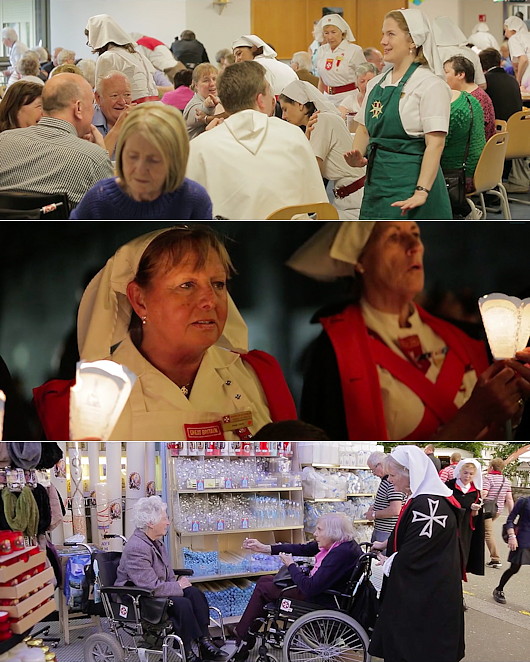
As today is the feast of Our Lady of Lourdes — and consequently the World Day of the Sick — here is the documentary we made regarding the Order of Malta’s annual pilgrimage to Lourdes each May.
Flag of an African Slaver
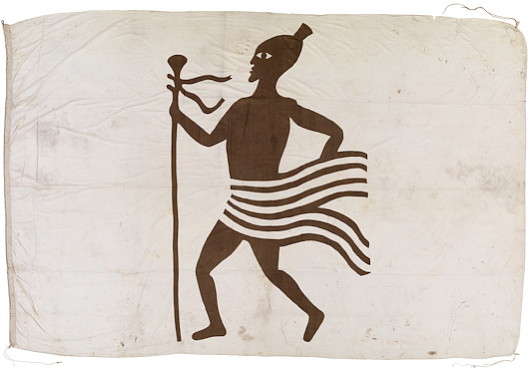
c. 1862-1866; hand-sewn cotton; 9 ft 2 in x 15 ft
Greenwich, London
The simple image of an African, garments aflutter, on a plain background provides a strikingly modern design as the commercial emblem of a firm engaged in the trade in human misery.
This flag was captured by Commodore Arthur Eardley-Wilmot while on anti-slavery operations off West Africa and given to his friend William Henry Wylde who supervised anti-slave-trade efforts at the Foreign Office in Whitehall.
The eradication of the slave trade is arguably the greatest peacetime achievement of the Royal Navy as well as powerful proof that the supremacy of economics can be overcome and made subject to morality. This is not just a possibility, but a necessary precondition for any humane and civilised order in society.
Tuesday 9 February 2016

For 175 years, the United States was a consciously anti-conservative country. But after the Second World War, that changed entirely. Daniel McCarthy looks at the mind of Russell Kirk and how the horrors of war led to the birth of American conservatism.
Twenty-first century scientists have described their collaboration with the remarkable thirteenth-century polymath Bishop Grosseteste in exploring some of the secrets of the rainbow.
Christopher Howse tells us what the tiny church of St Peter’s, Charney Bassett in Oxfordshire has in common with St Mark’s in Venice.
Alex Massie looks cold and hard at whether the Conservatives really could become the second-largest party at the upcoming Scottish Parliament elections.
After ninety years and comprising twenty-one volumes, the Oriental Institute’s dictionary of the Akkadian language has been completed.
The Irish Arts Review examines the curious case of Dublin Airport’s original terminal — a design far ahead of its time but the origins of which are murky.
If prices as well as almost every opinion poll show the public prefer traditional-looking homes, then why doesn’t the market respond by building them?
And finally, Margaret Thatcher’s former home in London is on the market.
Two Girls on a Tandem
Rose and Molly are two of my favourite people in the entire universe, and when they announced they were racing a tandem across the Cape Peninsula to raise money for the men’s charity Movember, how could one fail to get behind such an effort?
Movember is the charity that raises money for and awareness of men’s cancer (prostate, testicular, etc.), poor mental health, and physical inactivity amongst men. It turns out Molly happened to meet one of the global charity’s founders in a brewery not too long ago and was inspired to help out. Movember is most well known for encouraging men to grow a moustache and raise money during the month of November, but for obvious reasons this option is denied to Rose and Molly. And so instead they will be competing — on a tandem! — in the 2016 Cape Town Cycle Tour next month.
The girls have a blog going to publicise their training and efforts, as well as a JustGiving page to raise money, but they decided to throw a ‘Big Movember Lunch’ yesterday to raise extra dosh for the cause. This caused particular salivation in Cusackian quarters as both of them happen to be excellent cooks of the highest order, skills which draw many to their amusing parties in easterly bits of London.
So yesterday we satiated our voracious hunger at Movember’s UK headquarters in Exmouth Market where Molly and Rose treated us to culinary treats beyond one’s dreams — and Mark from Movember explained a little about the good work the charity does and how it’s expanded in recent years. The good cause and delicious food were only added to by the superb company Molly and Rose had assembled. If you have a shekel to spare, send them some love.
Canapés
Tostadas with Guacamole and Black Beans and chorizo
Dill Scones with Smoked Salmon and Horseradish
Stilton and Pickled Pear Puffs
Mini Meatballs with Mango dip
Beetroot and Goats Cheese Tartlets
Starter
Gammon and Mustard Terrine on Sourdough or Rye Bread
Main Course
Slow Cooked Chicken and Mushroom stew, Pomegranate and Quinoa Salad, Roasted Butternut Squash and Sweet Potato and Tzatziki on Beetroot and Buckwheat Pancakes
Pudding
Rose and Pistachio Cheesecake
Petits Fours and Coffee
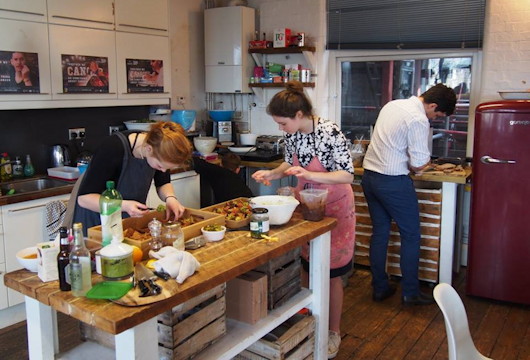





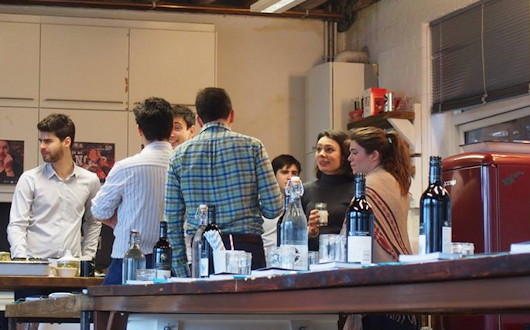
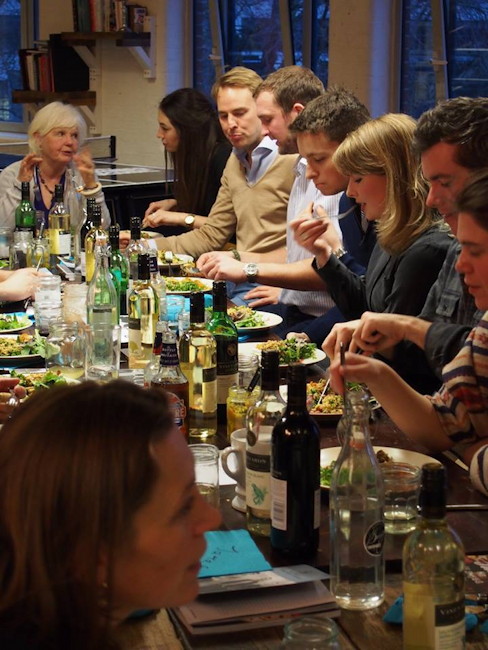
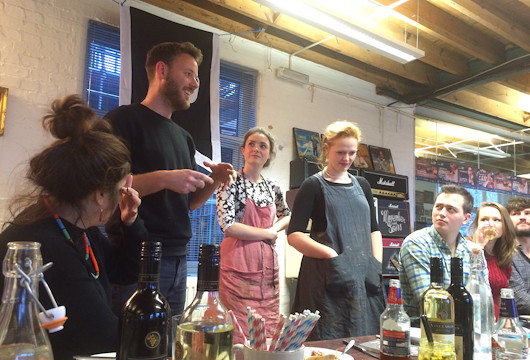
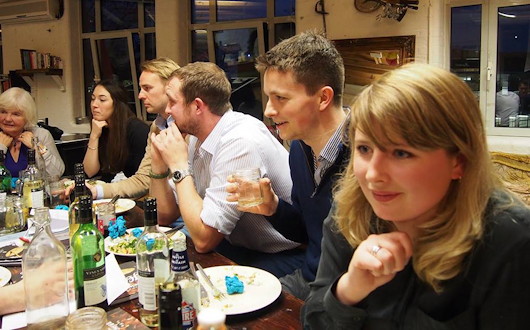
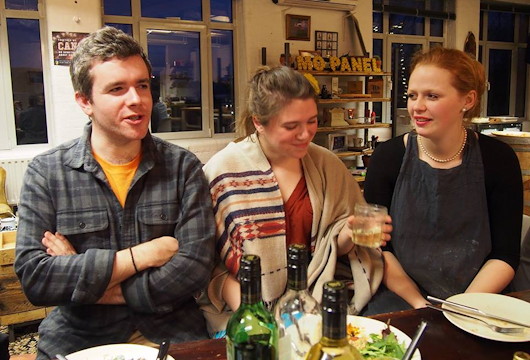
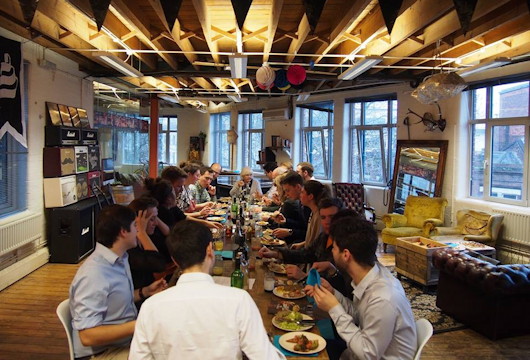
Smuts at Leiden
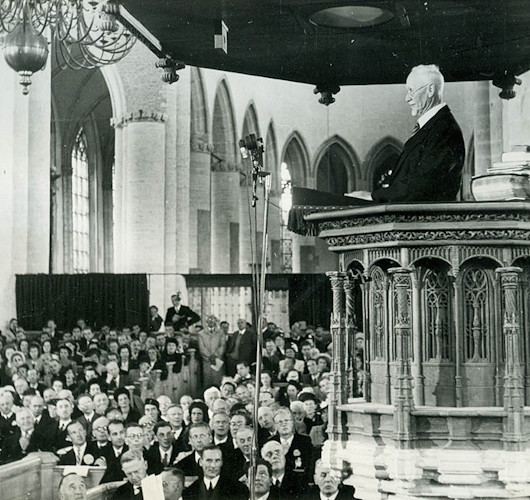
For quite some time, Leuven — in what is currently known as Belgium — was the only university in the Netherlands. It is still (barely, some argue) a Catholic university, and after the Protestant revolt sealed its rule over the northern part of the Dutch realms, William the Silent founded a university at Leiden as a Calvinist academy in 1575.
Leiden University has had strong links with South Africa from the earliest days. Ds. Johannes de Vooght — in the 1660s, the second leraar of Cape Town’s Dutch Reformed congregation — studied here, as did numerous predikante of that period and onwards, including Ds. Petrus van der Spuy, the first NGK minister to be born in South Africa.
South African politicians studied here aplenty: Sir Christoffel Brand (first Speaker of the Cape Parliament); Jan Brand (fourth president of the Orange Free State); Marthinus Steyn (sixth and final president of the O.F.S.); and Nicolaas Diederichs (third staatspresident of the Republic of South Africa).
Probably the first South African to be granted an honorary degree by Leiden (c. 1830) was Antoine Changuion, the founder of the Dutch language movement which advocated preserving Dutch as the cultural language of the Afrikaners against the emerging Afrikaans.
It was in 1948 that Leiden granted the greatest Afrikaner — Field Marshal Smuts — a Doctorate of Law honoris causa. Smuts was on his way back from Cambridge where he had been granted the honour of being installed as Chancellor of the University. Even Die Burger, a Nationalist paper opposed to his Verenigde party, found the event worthy of a caustic near-compliment:
“We may differ from him on many issues, but the honour which he has won for the Afrikaner does not leave us untouched.”
‘Five Finger Exercise’
The Print Room, Notting Hill (until 13 Feb 2016)
I remember as a child being confused when some people said they hated the holidays because it was awful having all the family together. The gatherings of our extended family were always occasions of mirth and merriment and not a few jibes — not to mention a long-term dispute over the precise location of Watertown, New York. The theatre of disfunctional families never hugely appealed to me, then, but over a few bottles of Erdinger in Kennington t’other night a friend dropped word of ‘Five Finger Exercise’ at the Print Room in Notting Hill (the old Coronet) and I thought I’d give it a go.
Peter Shaffer’s (‘Amadeus, ‘Equus’, etc.) play was first put on in 1958 under the direction of John Gielgud. The harmony of the Harrington family is not particularly upset by the arrival of a young German tutor Walter at the outset. Father Stanley — self-made man and head of a successful furniture company — is unbothered by his arrival at the instigation of the upwardly mobile mother Louise — imagine Mrs Bucket from ‘Keeping Up Appearances’ but half-French and with a cut-glass 1950s voice — who thinks it quite the done thing to have a live-in tutor teaching French to her daughter Pamela. The son Clive is just off to Cambridge so he’s all done and dusted and nothing to worry about. But then…
The remarkable thing about ‘Five Finger Exercise’ which makes it particularly close to life is how every character is effectively innocent and yet each character is to blame. Stanley has pursued work and the golf club while abdicating the rearing of children to his overbearing and pretentious wife, who is fixated into making sure they are just so. Clive has all the weaknesses of the typical self-obsessed teenager, but genuinely wants to love the father he feels only questions him. And Walter, so fixated with the mere fact of being in England and away from Germany and the past (and family) that he cannot see how his presence has upset a delicate balance. Little Pamela is mostly blameless, though.
Lucy Cohu as mother Louise is superb in voice, deportment, tone — everything. At first Jason Merrels (Stanley) fools the audience into thinking he is a settled old uncaring simpleton. But when push comes to shove Merrels displays the real emotion of the father who just doesn’t understand but wishes he could. Terenia Edwards is simply a delight — charming, sweet, and innocent, and perfectly conveying the hint that she may be on the cusp of something else. And I am surprised that the actor playing Walter (Lorne MacFadyen) is not German. (But then he was acting, I suppose.) Tom Morley, however, carried the weight of the play as Clive, taking a difficult role and giving us a convincing and credible performance. A brilliant actor.
The Director Jamie Glover deserves accolades for crafting a production that is fun, true to life, and, in the end, haunting.
Keeromstraat 14
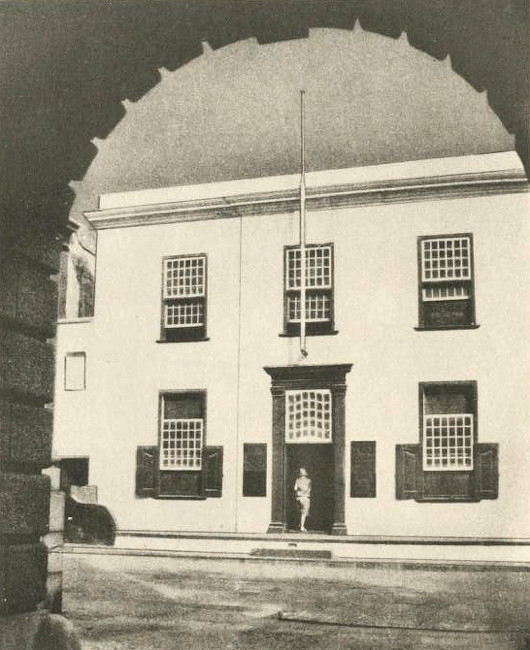
Keeromstraat 14, Kaapstad
This Cape Town house was built in 1751 for Hermanus Smuts who sold it on to Johan Jacobus Graaff, the woodworker who collaborated with South Africa’s greatest architectural duo, the sculptor Anton Anreith and the architect Louis Michel Thibault.
Thibault is believed to be responsible for the addition of the upper story and the current façade, seen above through an archway of the High Court.
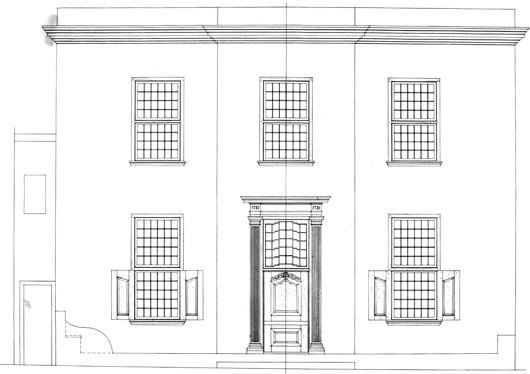
The building next door was designed by the pioneering Afrikaner architect Wynand Hendrik Louw (1883-1967) for De Nederlandsche Club te Kaapstad, the city’s club for Dutch businessmen and expatriates. Louw was also the architect of the Dutch Reformed Church at Napier in the beautiful Overberg.
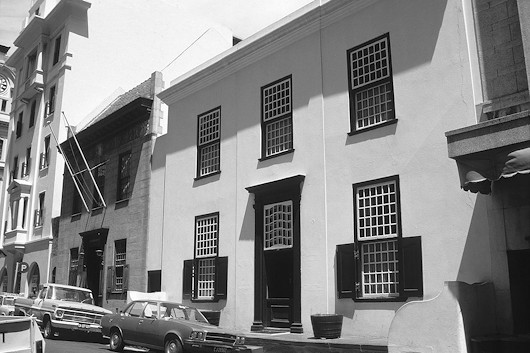
Leipzig Opera House
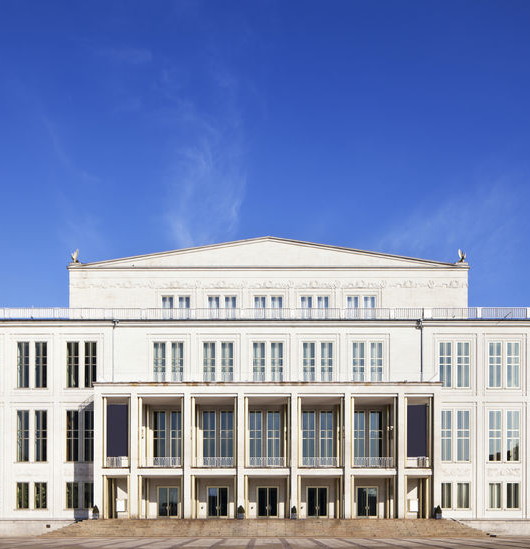
The Leipzig Opera House is the swansong of Socialist Classicism as an architectural style. The 1954 plans of the architect Kunz Nierade had to be toned down mid-construction, with some of the sculptural adornment simplified, as the official aesthetics of the German Democratic Republic shifted towards a more aggressive modernism.
While the Soviet Union provided the more well-known examples of Socialist Classicism, the Germans rather typically (but sparsely) excelled their Russian overlords. Admittedly, the quality was inconsistent: the Karl-Marx-Allee has some fine details but the overall plan leaves me cold, though postmodernists Philip Johnson and Aldo Rossi have praised it.
I enjoy the restrained classicism of this building, though the flatness of the façade leans a little towards the dull, with only the projecting portico providing a bit of comforting depth. Critics have pointed out the lack of light-and-shadow contrast during the daytime, and have tended to prefer the building’s nighttime appearance. It’s worth mentioning that the snowflake-like hanging lamps in the building’s foyer have a significant place in the design history of East German lighting fixtures (a subject about which I know now more than I ever expected).
The finality of Socialist Classicism’s end cannot more clearly be emphasised when comparing the Leipzig Opera House with the assaulting brutality of the Neues Gewandhaus concert hall (1977) across the Augustusplatz in a style we associate more closely with the DDR period. That the similarly styled Palast der Republik in Berlin — possibly the building most readily associated with East Germany’s socialist regime — has been completely demolished to be replaced by a reconstruction of the old city palace is a reminder of the hopeful possibilities we have at hand.

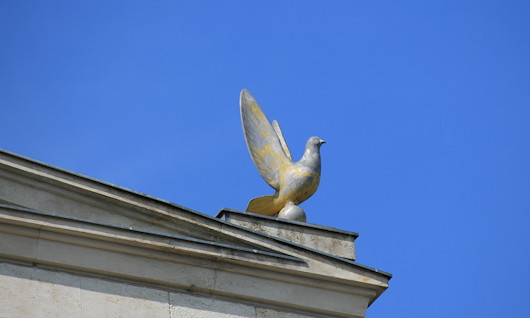
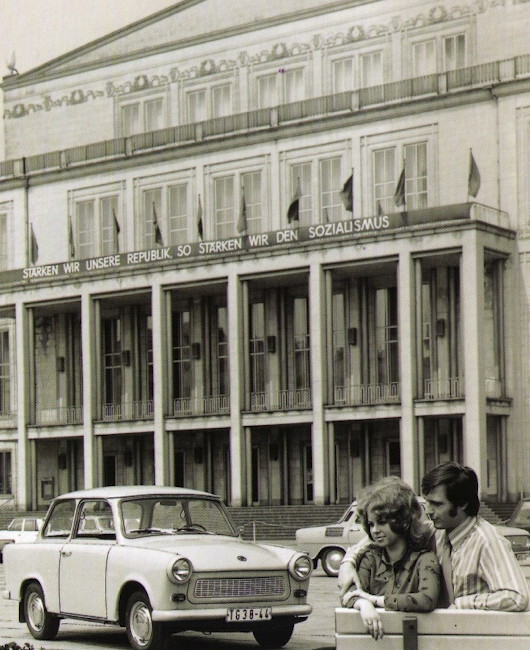
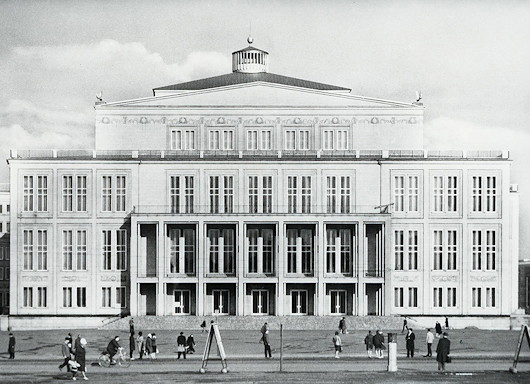
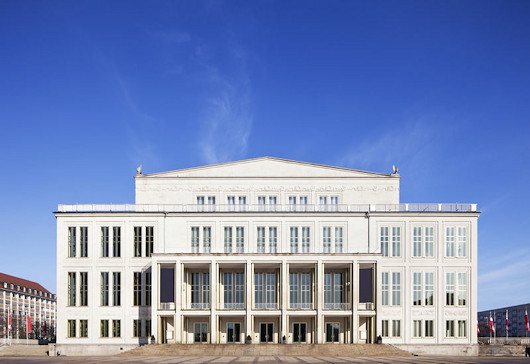
Search
Instagram: @andcusack
Click here for my Instagram photos.Most Recent Posts
- Silver Jubilee November 21, 2024
- Articles of Note: 11 November 2024 November 11, 2024
- Why do you read? November 5, 2024
- India November 4, 2024
- The Lithe Efficiency of the Old Constitution November 4, 2024
Most Recent Comments
Book Wishlist
Monthly Archives
Categories

